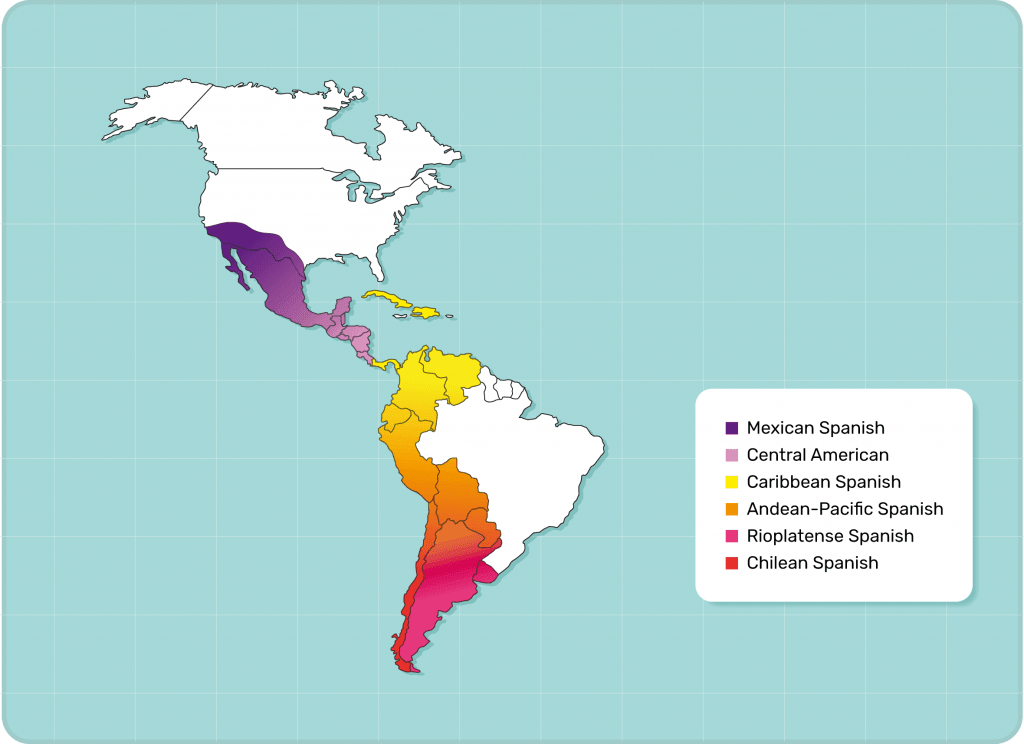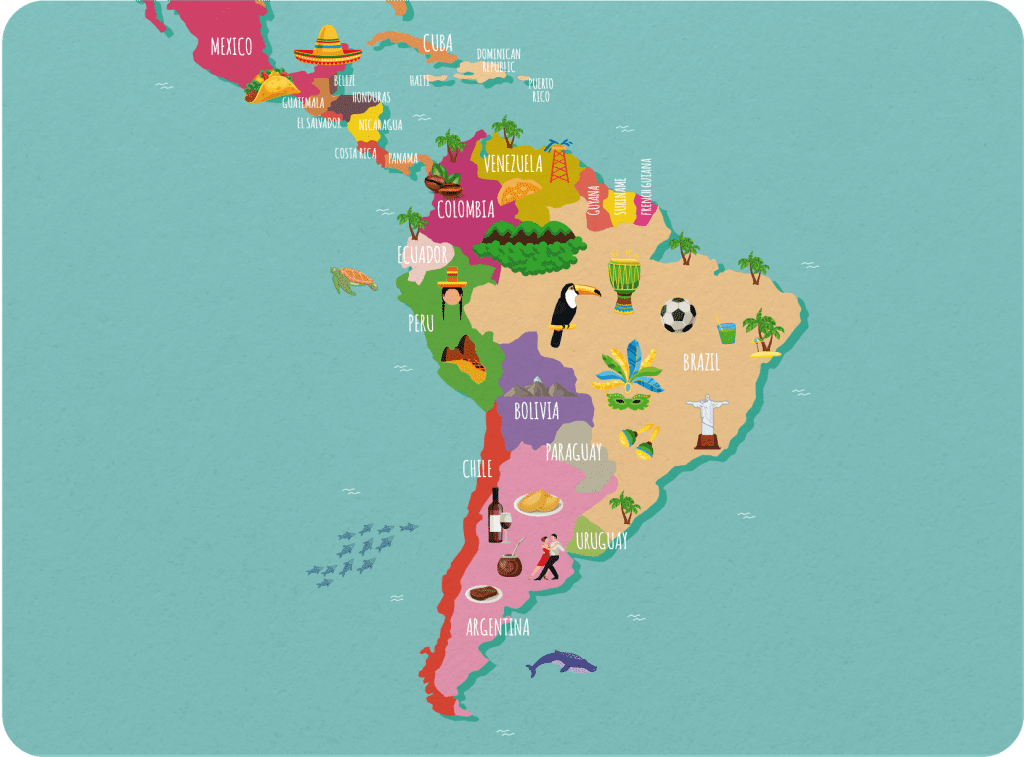Due to the emergence of the Internet and mobile technology, international companies now have a larger potential to expand their business globally and market their way into foreign countries. And language has become an essential tool to do so. If you’re looking to make an impact in Latin America, your marketing strategy should include the correct implementation of translation and localization services. Latin America is a highly diverse continent, with a fascinating mix of cultures and languages, and accurately targeting the region –in larger or smaller scales– is fundamental. This is why your marketing and localization efforts should take into consideration some economic, linguistic, and cultural aspects. Keep on reading to find out in further detail how to crack linguistic and cultural barriers and make your way into the Latin American market.
Know the economic context
Historically speaking, Latin America has been dominated by economic volatility and political instability. However, as a result of strong global conditions, Latin America’s middle class has been expanding in recent years, thus creating favorable commercial conditions for international brands.
As a sign of consumption growth, the curve of eCommerce is upward thanks to the ever-increasing use of social media. Online sales are expected to double to $ 118 billion by 2021. However, although Latin America is rapidly adopting digital payment methods, it remains at large a cash-first region. So, the more payment methods you can include in your sales and marketing strategy, the more diverse your customer base will be. Offering installment plans, for example, is a great consumer-focused strategy. Just bear in mind that over 60% of eCommerce is transacted via credit card installments.
Still, even if a large portion of Latin America’s population remains unbanked, direct bank transfers are gaining traction among consumers for digital transactions due to its convenience and consumer unwillingness to be in long credit card debts. This serves to show that consumers appreciate freedom of choice, so your localization strategy will greatly benefit from offering alternative payment methods as your company will be able to expand the number of consumers and, as a result, its business.
PRO TIP:
In combination with offering alternative payment methods, promote your business on social media, keep your website up and running at all times, and organize a fool-proof delivery plan.
Be aware of Latin America's regional languages
For your business to make an impact in the Latin American region, you need to bear in mind the linguistic variations that exist between countries.
Latin American countries were former colonies of European powers, which speak mostly Spanish but also Portuguese and French — all of them romance languages.
However, even If you are targeting a Spanish-speaking country within the region, your marketing efforts should accurately address the linguistic variety of that one country. For instance, if you’re launching an advertising campaign to sell popcorn, you should remember that its name varies. In Argentina, Chile, and Bolivia –three neighboring countries– popcorn is respectively referred to as “pochoclo”, “cabritas”, and “pipoca”.
However, if you’re looking to address a wider region, your localization strategy can be targeted at major regional subdivisions of Latin American Spanish, such as Mexican Spanish, Central American Spanish, Caribbean Spanish, Andean-Pacific Spanish, Rioplatense Spanish, and Chilean Spanish.

Some content, mainly TV shows, e-learning videos, and websites can be localized into Latin American Spanish, which is more “neutral” in form and Latin Americans recognize it as it is –a dry, vaguely alien form of Spanish that can be easily understood throughout the continent. Depending on your marketing and localizing needs, understanding the linguistic differences in Latin America can help your brand’s voice appeal to its target audience more authentically.
Cultural sensitivity
Besides understanding the linguistic nuances among Latin American countries, your company needs to empathize with the culture to which it localizes its content. Being culturally sensitive means being aware of the fact that each country holds its own system of values, behavior, and norms.
If you want to make sure your new target audience finds your content quickly relatable and memorable, you first need to understand who they are and what makes them unique. For this reason, your first marketing and branding approach to a foreign market should be doing research on specific cultural factors, not only to build a strong connection with your audience but also to avoid causing offense or even losing a contract. For instance, in Central America, using expensive jewelry and bling is a common sign of wealth and success. However, this may be seen as vulgar in other countries of South America.
These cultural aspects are not to be underestimated. If you’re looking for customer engagement and loyalty, your company needs to meet these cultural expectations.
Learn the national holidays and retail events
Keeping track of national holidays and retail events should also be a part of your localization strategy. If you’re looking to launch a product in a new market around a certain seasonal date, you need to be extremely aware of local holidays, which usually vary from country to country. Think of Children’s Day for instance. This holiday, which is celebrated on October 12th in Brazil, on April 31st in Mexico, and on the third Sunday of August in Argentina, works as a prelude to Christmas since children receive presents from their parents and relatives. Because families won’t hesitate to spend money on their little loved ones, Children’s Day is a major event that plays a dominant role in seasonal spending.
Another big retailing event is Black Friday, which has become incredibly popular in some Latin American countries, with surveys showing that almost 97% of Puerto Rican consumers are familiar with the holiday, in comparison with 95% of Brazilian consumers, and 83% of Venezuelan consumers, to name a few. So, whether universal or not, knowledge of what seasonal dates and retail events are popular in your target country can be a golden opportunity to grow your business globally.
If you are looking to localize your content to target Latin American markets, it’s worth having a specialized language partner on board. A local partner can accommodate your company’s needs and preferences and offer guidance on the best strategy to crack the above-mentioned cultural and linguistic barriers. Ultimately, you will have a better chance of succeeding and gaining a competitive advantage.

Do you want to know more about localization in Latin America? We’ve listed here some of the common mistakes of website translation and localization to Latin American markets

Ocean's Services
Breaking language barriers comes in various shapes and forms and recurring to text translation from one language into another one is the best way to reach more people and enter new markets.



